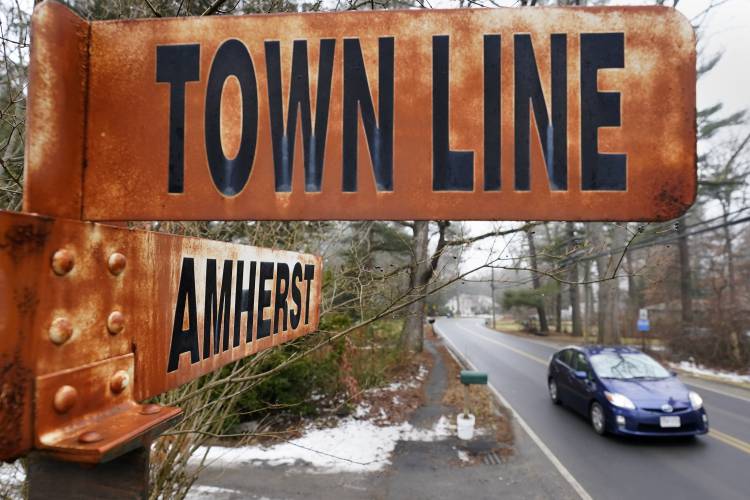Guest columnist John Varner: One solution to relentless march of student housing

AP PHOTO/CHARLES KRUPA AP PHOTO/CHARLES KRUPA
| Published: 11-07-2023 4:08 PM |
Trying to regulate student housing is a problem faced in many towns hosting large academic institutions. And websites touting the potential of individuals to make money by investing in single-family homes that can be converted to student rentals, and LLCs eager to cash in on rentals of all sorts, are not making this easier.
In Amherst, a “pro-development” faction on the Town Council sees unbridled expansion of the student housing market as the economic salvation that will fill town coffers and help finance an extremely ambitious array of construction projects. These folks try to paint their political opposition as Luddites lacking vision, or worse, as practitioners of discrimination.
For these pro-development people, I would suggest a brief quiz:
1. How often are you roused from sleep by noisy neighbors?
2. How often do cars park on lawns, or speed on your street, possibly endangering the kids in your neighborhood?
3. How often does the maintenance of properties on your street concern you?
4. How often do you find red plastic cups, or other beverage containers strewn about?
5. How often do people urinate in your or your neighbors’ lawns?
Article continues after...
Yesterday's Most Read Articles
6. How often do you dread an annual turn-over of renters on your street?
7. How far do you live from a student rental?
In Amherst, and many college towns, the answer to question 7 largely determines the answers to the first six questions.
In Amherst, the “real estate royalty” is trying to dismiss the concerns of residents living in neighborhoods where student rental conversions are metastasizing, and the town government is under-equipped and/or uninclined to enforce existing rules. Fortunately, there are solutions that offer some hope to those not making $1,000-plus per bedroom off rental properties.
One of the most effective measures the town could enact would be a provision adopted years ago in towns like State College, Pennsylvania, home of Penn State. That is enforcing a minimum distance, lot line-to-lot line for student rentals.
State College did this many years ago. The town was zoned in a manner that reflected the existing density of student rentals. Some areas were “written off” as already having an overwhelming presence of student rentals, some were areas at risk of being overrun, and some were deemed to be at low risk. Single-family properties already converted to student rentals were grandfathered in until such time as their ownership changed, at which time they would come under the new regulations.
After a couple iterations of trying various distancing schemes, the town arrived at a minimum distance, lot line to lot line, of 650 feet in areas not written off. This, in effect, limits the density of students renting former single-family home to two per quarter-mile of street or road.
One result has been to reduce complaints about noise, litter, public indecency, etc. Another benefit has been clawing back single-family homes into the market for families, as either rentals or as stock to purchase, free from the bids of investors seeking to capitalize by charging exorbitant per-bedroom rents to students.
It is not discrimination to want to limit single-family home student rentals — rather, it is a fair zoning practice that does not discriminate against residents already living in modest priced housing so that a few investors can enrich themselves.
Students have different social needs, different schedules, and different standards of behavior from adults with or without families. Some of these differences are not necessarily bad, but they exist, and they create friction. Investors converting single-family houses seldom lavish those rentals with remodeling upgrades, and usually seek to maximize profits by minimizing upkeep, which ultimately has an impact on property values.
It is time for the Amherst pro-development faction living in upscale enclaves to acknowledge these facts, and take steps to protect the rest of the town’s residents.
John Varner lives in Amherst.

 Guest column: Serving educational needs shouldn’t be ‘aspirational’
Guest column: Serving educational needs shouldn’t be ‘aspirational’ My Turn: Gaza and lies
My Turn: Gaza and lies Guest columnist Mariel E. Addis: Pride and prejudice
Guest columnist Mariel E. Addis: Pride and prejudice Guest columnist Gene Stamell: We know what we know
Guest columnist Gene Stamell: We know what we know
